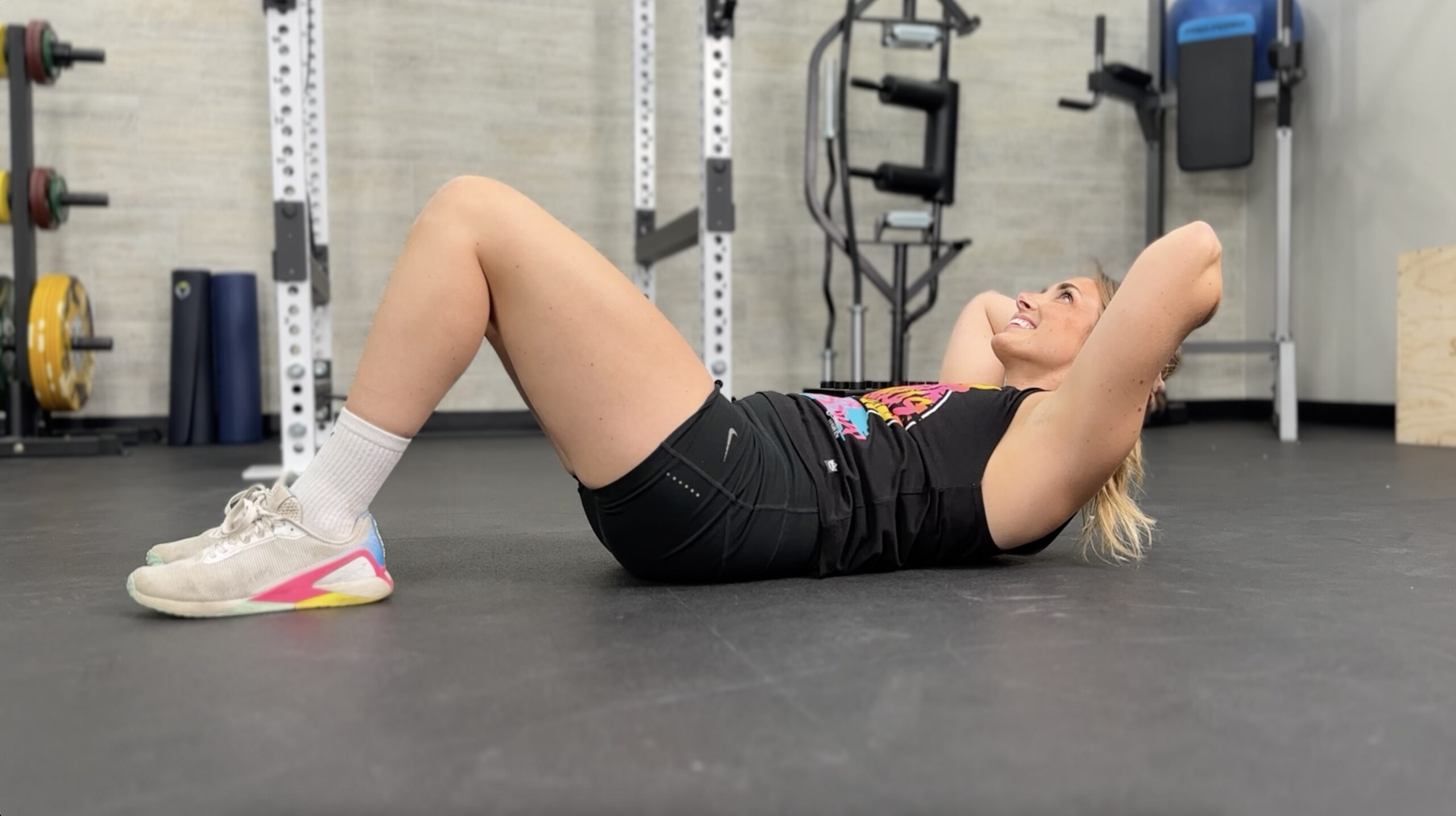We test and review fitness products based on an independent, multi-point methodology. If you use our links to purchase something, we may earn a commission. Read our disclosures.
Fitness aficionados have an abundance of abdominal exercises to really hit those core muscles hard, but even beginners are acquainted with the classic crunch exercise.
Today, crunches remain one of the most popular ab exercises. You could swing by any gym in the country right now—and, yes, I do mean right now—and you are guaranteed to find someone crunching away on the mat.
But, are they doing crunches correctly? Are you?
The crunches exercise is an integral part of many core workout routines, but it’s only worth doing if you’re going to do it right. That’s why we asked Amanda Capritto, certified personal trainer and GGR senior staff writer, how to do crunches with proper form, so you can get the most out of this classic core exercise.
How To Do the Crunches Exercise
- Lie on your back with your feet firmly planted on the floor and your knees bent at 90-degree angles, and clasp your hands behind your head to support your neck.
- Take a deep breath, then exhale and lift your head and shoulders off the ground while “crunching” your abs.
- Slowly return to the starting position.
- Repeat as needed.
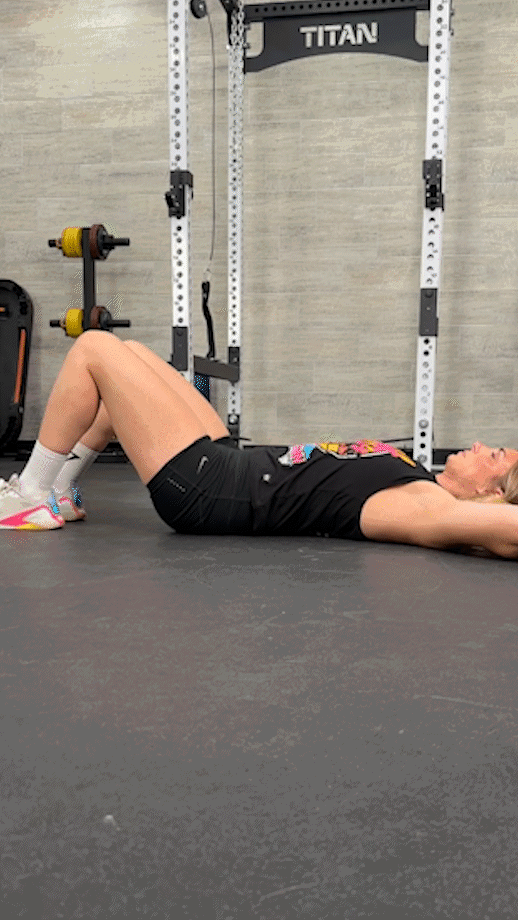
Trainer Tips for Form
Crunches are a classic movement that even children are taught during gym class and sports practices, but that doesn’t mean they learn proper form.
And, even though the range of motion is small, there are still ways to make mistakes, take shortcuts, or otherwise reduce the exercise’s impact.
Here are some tips to get it just right!
Keep Your Chin Tucked
“When we lift our upper body off the mat, we have a tendency to lead with our chin,” says Amanda. “This places unnecessary stress on the neck.”
Protect your neck by tucking your chin as you rise. Make sure your neck is not jutting forward, but also not so intensely tucked that it is touching your chest, as this takes your neck and spine out of alignment just the same.
RELATED: Upper Ab Workouts
Press Your Lower Back into the Floor
The point of doing crunches is to increase your core strength.
So, naturally, that means you should rely on that core strength by using your actual abdominal muscles to move. Keeping your lower back pushed into the mat ensures you’re not cheating and roping in other muscle groups or using momentum to get the job done.
Tuck Your Belly Button to Your Pelvis
“Pulling in the abdominals” is a common practice in the Pilates world, but it’s important for many abdominal exercises, like the crunch and crunch variations. Not only does it help you ensure you’re activating your core muscles during the range of motion, it’ll also save you from unnecessary back pain and strain.
“Tucking your belly button to your pelvis is a common cue we use during ab training,” Amanda says, “because it engages the pelvic floor, promotes more muscle activation in the core, and stabilizes the spine.”
Practicing this movement will help protect your spine from non-specific low back pain1, a widespread global problem and the leading cause of disability2, and keep the focus of the movement right where it should be.
Keep Your Feet Planted
Many people believe that lifting your legs in the air is the correct way to do crunches. It’s not.
“Lifting your legs during crunches takes away some of the core activation, making the exercise less effective,” says Amanda. “It’s also easier to use momentum while your legs are in the air.”
To make sure you stay grounded, do your crunches slowly and with control. If you’re still having trouble, consider working with a personal trainer to find a modification that works for you.
RELATED: Lower Ab Workouts
Common Mistakes During Crunches
We now know how to do crunches the right way, but sometimes it’s equally important to know what not to do and what to look out for.
Here are the most common mistakes people make when doing crunches.
Arching Your Back
Although we’re bringing our upper body upward during crunches, arching the back places strain on your spine. The crunch exercise is very slight, when performed correctly, with only your head and shoulder blades coming off the mat.
To avoid unnecessary strain, keep that back flat and pushed into the mat.
Craning Your Neck
You shouldn’t have an issue with craning your neck if you follow our cue to keep your chin tucked, but it’s common for people to lead with their chin and, therefore, take their neck out of alignment with their spine.
Tuck your chin down to avoid this issue, but be sure you’re not tucking it all the way into the chest. There’s a middle-ground here; listen to your body to find it.
When in doubt, consult a personal trainer, coach, or other qualified fitness professional for feedback on your form.
Thudding to the Floor
“The best way to maximize the effect of the crunches exercise,” Amanda says, “is to maximize the time under tension. That means slow and controlled movements, making sure to really feel that contraction in your core.”
So, what does it mean if you’re crashing down after your crunch and thudding to the floor?
Often, it’s an indication that you’re using momentum to get through your repetitions. You might feel like an absolute beast blasting reps at that pace, but you’re cheating if you’re relying on momentum to carry you through the range of motion.
And cheating the movement only cheats yourself out of results!
Engaging Hip Flexors Instead of Abs
So, you fancy yourself an ab exercise pro, do you?
You can easily reach double digits when it comes to reps of the crunches exercise, right?
For some, that’s a true testament to their incredible core strength, but, for many, it’s a hint that they’re overly relying on their hip flexors to do the work instead of using their core.
We want to make sure that the movement comes from contracting our abs and not from our hips when we’re doing crunches, or any ab exercise for that matter.
RELATED: Ab Roller Workout
Crunches Exercise Variations & Modifications
The crunches exercise is great to kick off a comprehensive core workout, but it shouldn’t be the only thing you’re doing to build a strong core.
Here are some variations to work into your workout routine.
Sit-Ups
The sit-up looks a lot like the abdominal crunch at a glance, but they are two totally different exercises. While you keep your lower back on the floor during crunches, it comes up off the floor during the sit-up.
Thanks to this increased range of motion, your sit-ups will hit the rectus abdominis, just like crunches, but it will also hit the transverse abdominis, obliques, hip flexors, and erector spinae.
Beginners might prefer sticking with the basic crunch, but working up to the sit-up is a great next step once you start gaining proficiency.
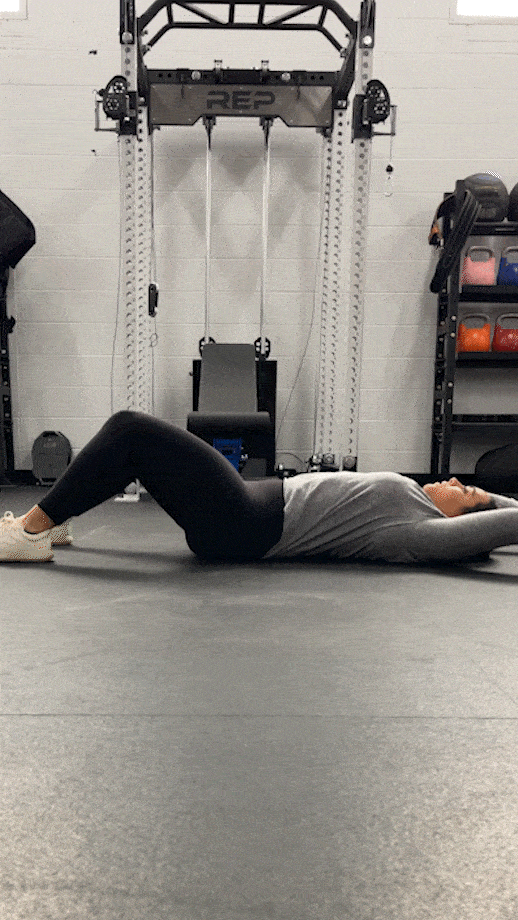
Bicycle Crunches
Anyone who’s done bicycle crunches knows why it’s one of the best ab exercises out there.
Here’s how to do them with proper form:
- Lie on the floor and get into the crunches starting position.
- Raise your feet off the floor and make 90-degree angles with your knees.
- Inhale, then exhale as you bring your right elbow to your left knee while straightening your right leg. Squeeze your core as your elbow and knee touch.
- Now, switch sides and tap your left elbow to your right knee, straightening your left leg, as though you’re pedaling a bicycle.
- Repeat for the desired number of reps, then rest.
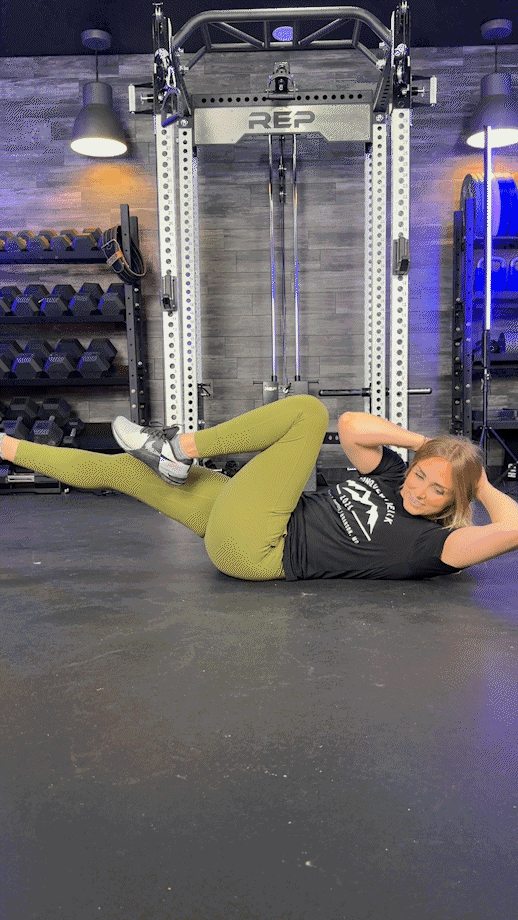
Basic crunches work only the rectus abdominis, but the twisting of your torso during the bicycle crunch movement gets the rectus abdominis, the deeper transverse abdominis, and the obliques on the sides, too.
For a super comprehensive workout, warm-up with some dynamic stretches and movements, get in a few sets of bicycle crunches, then finish off with regular crunches to really isolate the rectus abdominis and feel that burn!
RELATED: Isolation Exercises 101
Reverse Crunches
Because your basic crunch involves lifting the upper back off the mat, you’ll mostly target the top of the rectus abdominis. To show a little more love to your lower abs, you will want to do reverse crunches too, which involve doing a leg raise movement and then crunching your knees to your chest.
Here’s how to do the reverse crunch properly:
- Lie face up on the floor with your arms at your sides.
- Pushing your palms into the floor, raise your legs straight up, letting your lower back come off the mat, and bring your knees into your chest.
- Slowly extend your legs again and lower them back down.
- Instead of bringing your legs back to the mat, stop them an inch or so before contact and cycle right into the next rep.
- Repeat as needed.
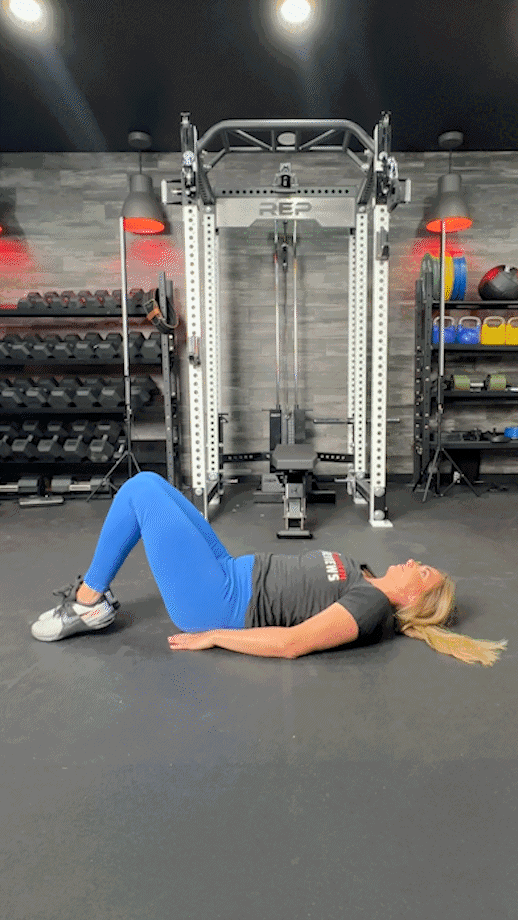
Useful Equipment and Accessories for Crunches
As an exercise that generally only uses your own body weight, there aren’t many accessories to make the experience of doing crunches more luxurious, but there are a few useful ones.
RELATED: Best Core Exercise Equipment In 2023
Yoga Mat or Exercise Mat
Even if you’re not “of a certain age,” the idea of driving your lower back into a hard floor probably doesn’t sound too appealing. It’s certainly not appealing for your lower back, which will likely start aching if you don’t give it a little cushioning.
That’s why a nice cushy exercise mat is basically a must when it comes to crunches, sit-ups, and other floor-based core exercises.
AbMat Sit-Up Pad
Lots of CrossFit boxes and commercial gyms stock up on AbMat Sit-Up Pads, and it’s not hard to understand why. This inexpensive, low-profile piece of equipment just slides under your lower back during your reps, providing some much-needed cushioning as well as giving a little extra range to the movement, increasing the overall workload.
Using an AbMat keeps the focus on the right muscles while you’re doing ab work, and they’re very comfortable as well.
RELATED: AbMat Reviews
AbMat Wrap Guard
One of the biggest criticisms of the AbMat is that it slides around when you’re really in the zone. You need something that stays in place so you can focus on good, efficient biomechanics and maintaining proper form as you rack up the reps.
The AbMat Wrap Guard wraps around your AbMat to increase stability, so you won’t have to worry about losing it while you’re working hard.
AbMat Ab Amigo
Ideally, you have the core strength to do crunches and sit-ups without your feet flying into the air. Unfortunately, that’s not always the case, and it’s not always easy to find an anchor or a buddy to hold our feet in place while we work.
With the AbMat Ab Amigo, you do always have a buddy to keep your feet from floating away as you feel the burn in your abdomen.
Simply slide the Amigo under a doorway, or really under any small gap that’s otherwise flush with the floor, and you’re good to get going on your ab workout.
FAQs: Crunches Exercise
Are crunches bad for your back?
Crunches remain extremely popular, but many people have grown concerned that crunches are bad for your back because, when the spine is flexed, it pushes the lower back into the floor and causes unnecessary strain.
Keeping the range of motion short during crunches should reduce the amount of force. Adding cushioning with a nice exercise mat or AbMat works well, too.
But if you really want to make sure your crunches don’t contribute to back pain while making sure you get all the benefits of the standard crunch, and then some, grab a Swiss ball3 and do your crunches using that.
Are crunches effective?
Crunches isolate the rectus abdominis, improving core strength and stability. You won’t get a full-body workout from them, as you might by using plank exercises, but you will train those abs.
Do crunches burn belly fat?
A common misconception is that doing loads of crunches will inspire weight loss and burn belly fat to reveal those six-pack abs you’ve been working so hard for.
Unfortunately, that’s known as “spot reduction,” and it is a myth4.
The best way to reveal those washboard abs you’ve been working so hard to sculpt is by adopting a multifaceted approach including cardio and resistance training and proper nutrition.
It’s hard work, but, with consistency and a little guidance, you can do it!
How do you do crunches correctly?
Here’s how to properly perform the crunches exercise:
Lie on your back with your feet firmly planted on the floor and your knees bent at 90-degree angles, and clasp your hands behind your head to support your neck.
Take a deep breath, then exhale and lift your head and shoulders off the ground while “crunching” your abs.
Slowly return to the starting position.
Repeat as needed.
References
1. Hlaing SS, Puntumetakul R, Khine EE, Boucaut R. Effects of core stabilization exercise and strengthening exercise on proprioception, balance, muscle thickness and pain related outcomes in patients with subacute nonspecific low back pain: a randomized controlled trial. BMC Musculoskelet Disord. 2021;22(1):998. Published 2021 Nov 30. doi:10.1186/s12891-021-04858-6
2. GBD 2017 Disease and Injury Incidence and Prevalence Collaborators. Global, regional, and national incidence, prevalence, and years lived with disability for 354 diseases and injuries for 195 countries and territories, 1990–2017: a systematic analysis for the Global Burden of Disease Study 2017. The Lancet. 8 Nov 2018: 392.
3. Escamilla RF, Lewis C, Bell D, et al. Core muscle activation during Swiss ball and traditional abdominal exercises. J Orthop Sports Phys Ther. 2010;40(5):265-276. doi:10.2519/jospt.2010.3073
4. Vispute SS, Smith JD, LeCheminant JD, Hurley KS. The effect of abdominal exercise on abdominal fat. J Strength Cond Res. 2011;25(9):2559-2564. doi:10.1519/JSC.0b013e3181fb4a46
Further reading

Balance exercises aren’t only for seniors. Find out how balance training can help give you an edge on the playing field! Read more

Our half-marathon training plan covers everything from weekly workout splits to the best running fuel. Read more

Our 5 interval training workouts designed by a certified personal trainer (CPT) can help improve your cardio fitness and support weight loss. Learn more now! Read more

The PRx Performance Profile Pro Squat Rack is the best space saving squat rack currently available. We've used and tested many of the various options including the popular fold-away racks and undoubtedly, the Profile Squat Racks from PRx Performance are not only extremely sturdy, but also the most convenient. Read more

